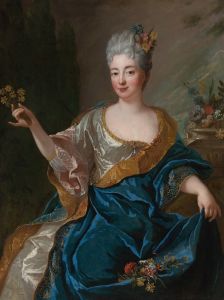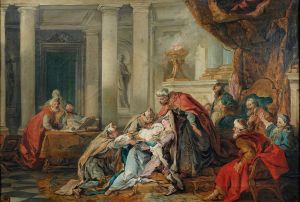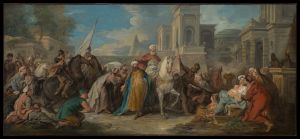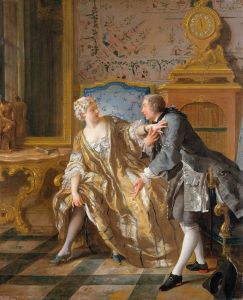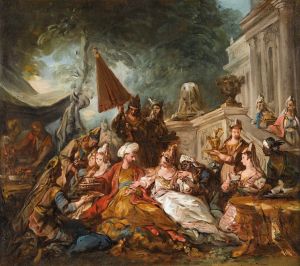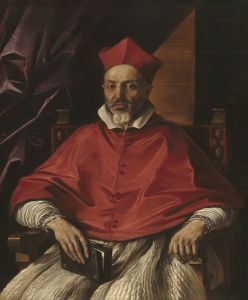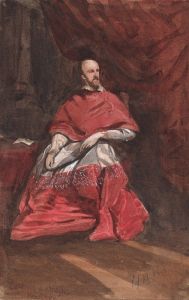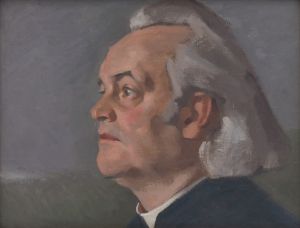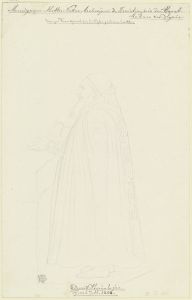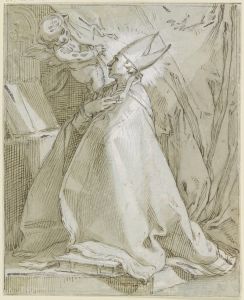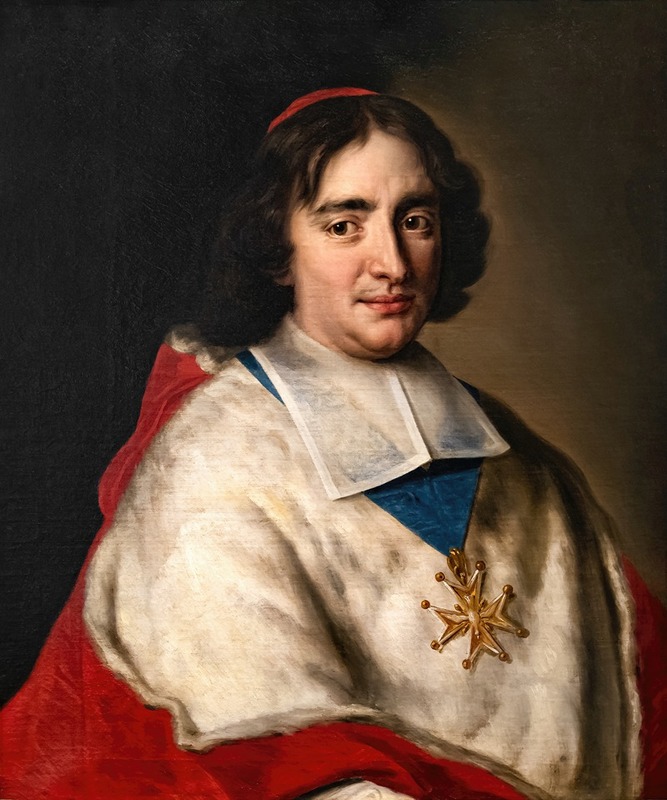
Portrait of Pierre de Bonzi, cardinal-archbishop of Narbonne
A hand-painted replica of Jean-François de Troy’s masterpiece Portrait of Pierre de Bonzi, cardinal-archbishop of Narbonne, meticulously crafted by professional artists to capture the true essence of the original. Each piece is created with museum-quality canvas and rare mineral pigments, carefully painted by experienced artists with delicate brushstrokes and rich, layered colors to perfectly recreate the texture of the original artwork. Unlike machine-printed reproductions, this hand-painted version brings the painting to life, infused with the artist’s emotions and skill in every stroke. Whether for personal collection or home decoration, it instantly elevates the artistic atmosphere of any space.
The "Portrait of Pierre de Bonzi, Cardinal-Archbishop of Narbonne" is a notable work by the French painter Jean-François de Troy. Jean-François de Troy (1679–1752) was a prominent artist of the late Baroque period, known for his historical paintings, genre scenes, and portraits. His works are characterized by their elegance, attention to detail, and vibrant use of color.
Pierre de Bonzi (1631–1703) was a significant figure in the Catholic Church during the 17th century. He held various high-ranking positions, including that of Cardinal and Archbishop of Narbonne. Bonzi was a member of the influential Bonzi family, which had strong ties to the French aristocracy and the Catholic Church. His ecclesiastical career was marked by his dedication to the church and his involvement in the political and religious affairs of his time.
The portrait by Jean-François de Troy captures Cardinal Bonzi in a dignified and authoritative manner, reflecting his high status and the respect he commanded. The painting is a fine example of de Troy's skill in portraiture, showcasing his ability to convey the personality and stature of his subjects through meticulous attention to detail and composition.
In the portrait, Cardinal Bonzi is depicted wearing the traditional red robes of a cardinal, which symbolize his rank within the Catholic Church. The rich fabric and intricate details of his attire are rendered with great precision, highlighting de Troy's mastery of texture and color. Bonzi's expression is calm and composed, suggesting a man of intellect and authority. His gaze is directed slightly to the side, adding a sense of contemplation and introspection to the portrait.
The background of the painting is relatively simple, ensuring that the focus remains on the cardinal. The use of light and shadow in the portrait is particularly effective, creating a sense of depth and three-dimensionality. This technique, known as chiaroscuro, was commonly used by artists of the Baroque period to enhance the realism and dramatic effect of their works.
Jean-François de Troy's portrait of Pierre de Bonzi is not only a representation of an important ecclesiastical figure but also a testament to the artist's skill and the artistic trends of the time. The painting reflects the grandeur and formality associated with portraits of high-ranking church officials, while also capturing the individual character of the subject.
The portrait is part of the collection of the Musée Fabre in Montpellier, France. The Musée Fabre is renowned for its extensive collection of European paintings, including works from the Renaissance to the 19th century. The inclusion of de Troy's portrait of Cardinal Bonzi in the museum's collection underscores the historical and artistic significance of the work.
In summary, the "Portrait of Pierre de Bonzi, Cardinal-Archbishop of Narbonne" by Jean-François de Troy is a distinguished example of Baroque portraiture. It effectively conveys the status and personality of Cardinal Bonzi through the artist's adept use of composition, detail, and color. The painting remains an important piece within the Musée Fabre's collection, offering insight into the ecclesiastical and artistic heritage of 17th-century France.







